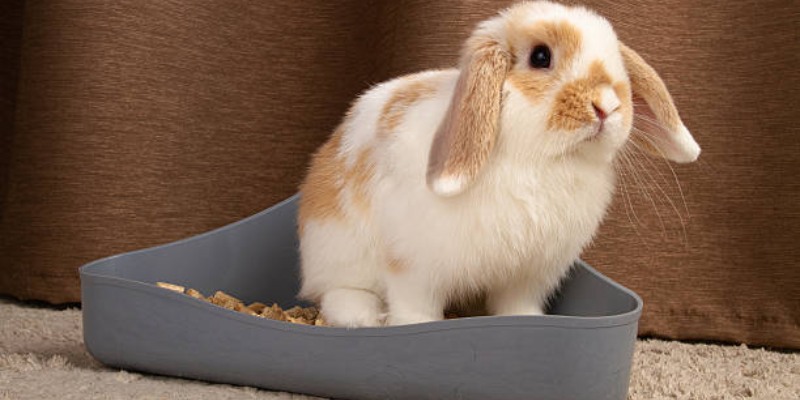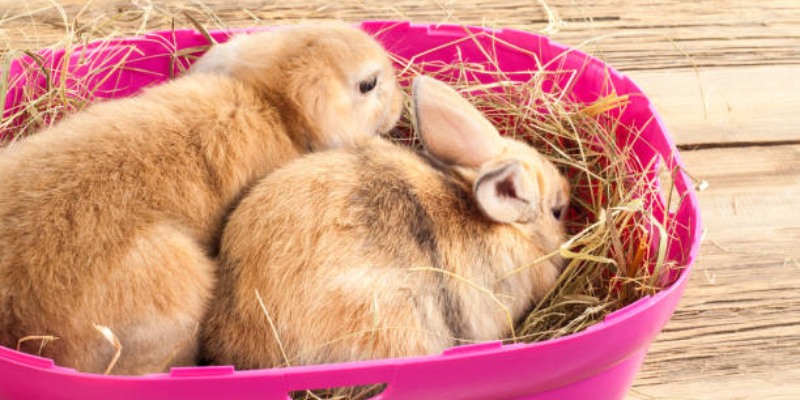How To Train Your Rabbit To Use a Litter Box
Litter training your rabbit is one of the most rewarding experiences you can have as a pet owner. Clean-up will become simpler and help clean and tidy your home environment, reinforcing the bond between you and your furry companion.
Rabbits are naturally clean creatures but still require patience, consistency, and a few essential strategies to train them to use a specific bathroom area. This article will take you through all you need to know to get your bunny trained to use a litter box.
Why Litter Training Matters
Rabbits are naturally clean creatures. They will not mess up their beds in the wild, so they don't attract predators. This same instinct makes them a perfect candidate to be litter-trained. A litter-trained rabbit means less mess, less smell, and a healthier home for you and your pet. And it also leaves your rabbit with more room to move around freely without needing to be caged constantly.

Choosing The Right Litter Box
The secret to successful litter training is selecting a litter box suitable for your rabbit's personality and size.
Size Matters
For small rabbits (less than 3 pounds): A shallow, low-sided box is easy to jump into. A cat box litter or a big plastic storage bin (trimmed down for ease of entry) will do the job.
For medium to large rabbits (3+ pounds): Use a deeper box with taller walls so that litter won't get kicked out. Corner boxes made for cats usually work well.
Shape and Style
Open-top boxes are perfect for rabbits that relish the freedom of jumping in and out at will.
Hooded boxes: A few rabbits feel vulnerable in closed-in areas, so shun covered or domed boxes unless your rabbit indicates a strong preference.
Put a small towel or mat at the bottom of the box to avoid slipping.
Choosing The Ideal Litter Material
Not all litters are created equal—and some will harm your rabbits. Here's what to look for:
Safe Litter Alternatives
Paper-based pellets are absorbent, dust-free, and non-toxic if ingested (which rabbits are prone to do during grooming). CareFresh and Living World are good brands.
Aspen shavings: A natural wood product that is absorbent and soft.
Newspaper: Eco-friendly and inexpensive, but less absorbent than pellets.
Avoid These Litters
Clay litters: Dusty and may be harmful if ingested or inhaled.
Pine or cedar shavings emit potent oils that may irritate rabbits' respiratory tracts.
Scented litter or liners: Strong smells can overpower rabbits' delicate noses.

Setting Up The Litter Box
The box's location and how you prepare it will significantly affect your rabbit's readiness to use it.
Place, Place, Place
Put the litter box in a quiet, low-traffic section of your rabbit's environment. Most rabbits like to be alone when they go to the bathroom.
If your rabbit already has a preferred "bathroom area," put the box there to take advantage of their habits.
Avoid putting the litter box near food or water dishes, as rabbits instinctively avoid soiling their eating areas.
Preparing the Box
Fill the box with 2–3 inches of litter.
Place a small handful of hay over the top of the litter. Rabbits tend to graze on hay while eliminating, making a pleasant association with the box.
If your rabbit has already staked a particular place in their cage, place a few droppings or a little urine-soaked bedding in the litter box to demonstrate its purpose.
The Training Process: Day By Day
Day 1: Presenting the Litter Box
Confine your rabbit to a small area (like their cage) where the litter box is the only bathroom available.
Stand by the box to watch what they do in real-time. If they circle or sniff the box, give them calming praise.
Days 2–7: Reinforce Good Behaviour
When your rabbit uses the litter box, reward it with a treat (e.g., apple or carrot) and an oral compliment.
If they go outside the box, scoop them up gently and put them back in the box afterwards. Don't scold—they won't comprehend and might get stressed.
Weeks 24–Gradually Increase Their Space
Once your rabbit consistently uses the litter box in its cage, give it supervised time in a larger, bunny-proofed room.
Place additional litter boxes in the corners that they tend to frequent. Later, once their habits are more solidified, you can reduce the number of boxes.

Addressing Common Concerns
Problem: My Rabbit Keeps Pooping Outside the Box
Solution: Recheck the box size and position. Is it too small? Too far away from where they like to be? Add more boxes temporarily to guide them.
Problem: My Rabbit Uses the Box for Part of the Day, But Not All Day
Solution: Rabbits often have routines. Adjust their schedule if they use the box in the morning but not at night. Feed them hay when they're most likely to eliminate to encourage bathroom breaks.
Problem: My Rabbit Kicks Litter Everywhere
Solution: Attempt using a deeper box or changing to a different type of litter. Some rabbits don't like the texture of some litters.
Problem: My Rabbit Sprays Urine Outside the Box
Solution: Unneutered/unspayed rabbits can mark territory. Getting them spayed/neutered can stop this.
Advanced Strategies For Success
Several Rabbits? No Issue
Each rabbit in a home with several bunnies must have their litter box and an extra one. This reduces competition and territorial marking.
Travelling or Moving?
Maintain your rabbit's litter box schedule during moves. Take their regular litter and box to reduce Stress.
Senior Rabbits
Older rabbits can develop arthritis and may find deep boxes hard to climb. Switch to a shallow box and soft, easy-to-dig litter.




